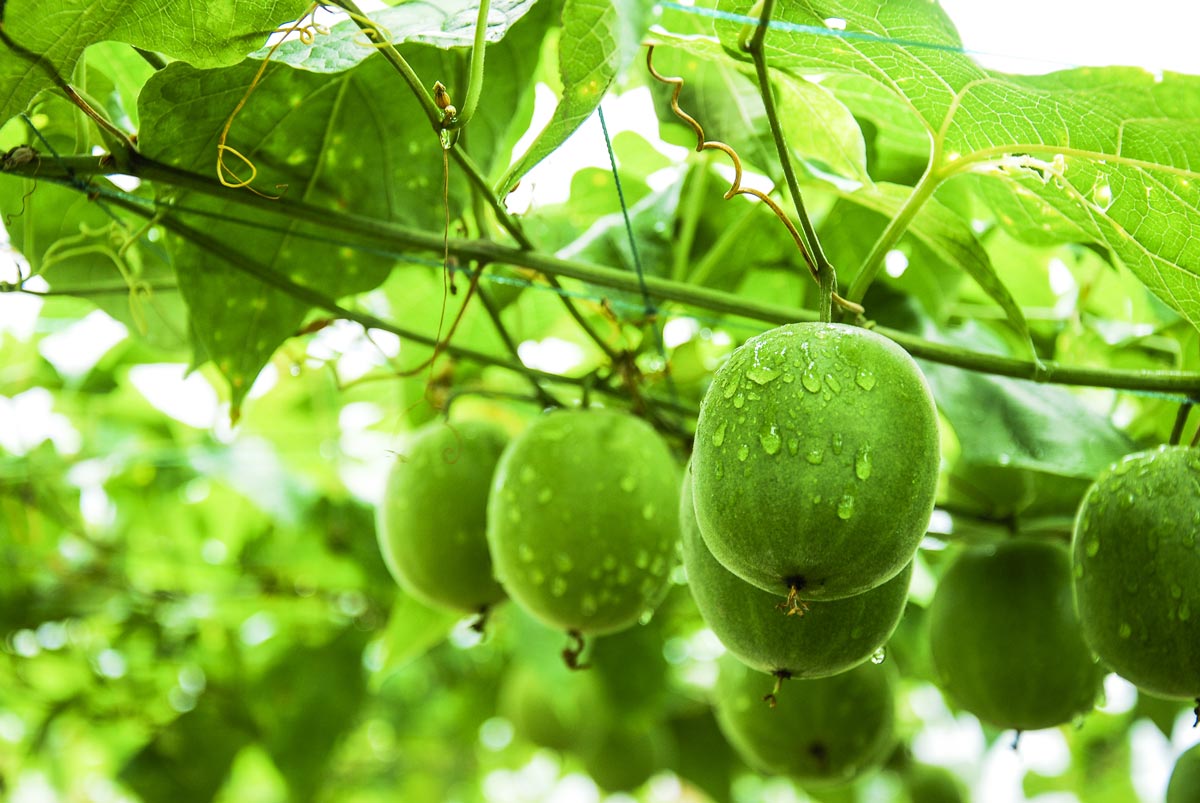The Monk Fruit Plant (Fruto del Monje planta), a member of the Cucurbitaceae family, has gained attention for its naturally sweet fruit. Its unique composition makes it a promising alternative to traditional sweeteners, offering potential health benefits.
This plant, native to Southeast Asia, thrives in tropical and subtropical regions. Its scientific classification places it in the genus Siraitia and species grosvenorii.
Taxonomy and Description

The Monk Fruit Plant (Siraitia grosvenorii) is a perennial vine belonging to the Cucurbitaceae family, the same family as cucumbers and melons. It is native to the mountainous regions of southern China, Thailand, and Vietnam, where it has been cultivated for centuries for its sweet-tasting fruit.
Scientific Classification
- Kingdom: Plantae
- Division: Magnoliophyta
- Class: Magnoliopsida
- Order: Cucurbitales
- Family: Cucurbitaceae
- Genus: Siraitia
- Species: Siraitia grosvenorii
Description, Fruto del monje planta
The Monk Fruit Plant is a climbing vine that can reach up to 15 meters in length. It has large, deeply lobed leaves with serrated edges. The flowers are small and white, with five petals. The fruit of the Monk Fruit Plant is a round, green melon that turns yellow when ripe. The flesh of the fruit is white and juicy, with a sweet taste that is 300 times sweeter than sugar.
Cultivation and Propagation: Fruto Del Monje Planta

The Monk Fruit Plant thrives in tropical and subtropical climates, where it can be cultivated successfully. Let’s explore the optimal growing conditions and propagation methods for this remarkable plant.
The plant prefers well-drained, sandy or loamy soil with a pH between 5.5 and 6.5. It requires ample sunlight, with at least 6 hours of direct exposure per day. The ideal temperature range for growth is between 20-30°C (68-86°F).
Seed Germination
Seeds can be sown in a seedbed or directly into the ground during spring. They should be planted shallowly, about 0.5 cm (0.2 inches) deep, and kept moist. Germination typically occurs within 10-14 days.
Vegetative Cuttings
Vegetative cuttings are another effective method of propagation. Stem cuttings of about 15-20 cm (6-8 inches) in length can be taken from mature plants. Remove the lower leaves and dip the cutting in a rooting hormone before planting it in a well-drained potting mix. Keep the cutting moist and in a warm environment to promote root development.
Plant Care
Once established, the Monk Fruit Plant requires minimal care. Regular watering is essential, especially during hot and dry weather. Fertilize the plant monthly during the growing season with a balanced fertilizer. Pruning is not necessary but can be done to control the size and shape of the plant.
Harvesting and Processing
:max_bytes(150000):strip_icc()/what-is-monk-fruit-5188034-hero-02-dfa40deda0b646cba986eca9d40a0d93.jpg)
Harvesting Monk Fruit is a crucial stage that determines the quality and quantity of the final product. The fruit is typically ready for harvest around September or October, when it reaches full maturity. Skilled farmers carefully select ripe fruits based on their size, shape, and color.
Extraction and Purification
After harvesting, the Monk Fruit undergoes a rigorous extraction and purification process to isolate the sweet compounds. The fruits are first washed, sorted, and deseeded. Then, they are crushed and pressed to extract the juice, which contains the mogrosides.
The extracted juice is then subjected to a series of filtration and purification steps to remove impurities and concentrate the mogrosides. This involves techniques such as membrane filtration, ion exchange chromatography, and crystallization.
Forms of Monk Fruit
The purified Monk Fruit extract is available in various forms to meet different consumer needs:
- Powder: Pure Monk Fruit extract in powdered form, offering a concentrated sweetness.
- Liquid: A concentrated liquid extract that can be added to beverages or used as a sweetener in recipes.
- Extract: A highly concentrated form of Monk Fruit extract that is often used in commercial food and beverage production.
